Let’s be real. Your home doesn’t need to look like a magazine spread. It needs to work for your actual life, especially when you navigate the beautiful chaos of working parenthood. Between school drop-offs, demanding jobs, dinner dilemmas, and the endless laundry cycle, finding time for home organization often feels like a fantasy, not a practical reality. You crave a calmer home, but the thought of a massive decluttering project brings on immediate overwhelm. Sound familiar? Been there.
We understand the pressure. You want a tidy space, but hours of dedicated sorting just aren’t in the cards. The good news? You don’t need hours. We’re going to tackle this together with a system that takes just 15 minutes a day. This isn’t about perfection; it’s about consistent, manageable progress that keeps clutter from taking over. This simple, daily cleaning routine helps you reclaim your space and your sanity, one small step at a time. It’s a game-changer for busy family organization.
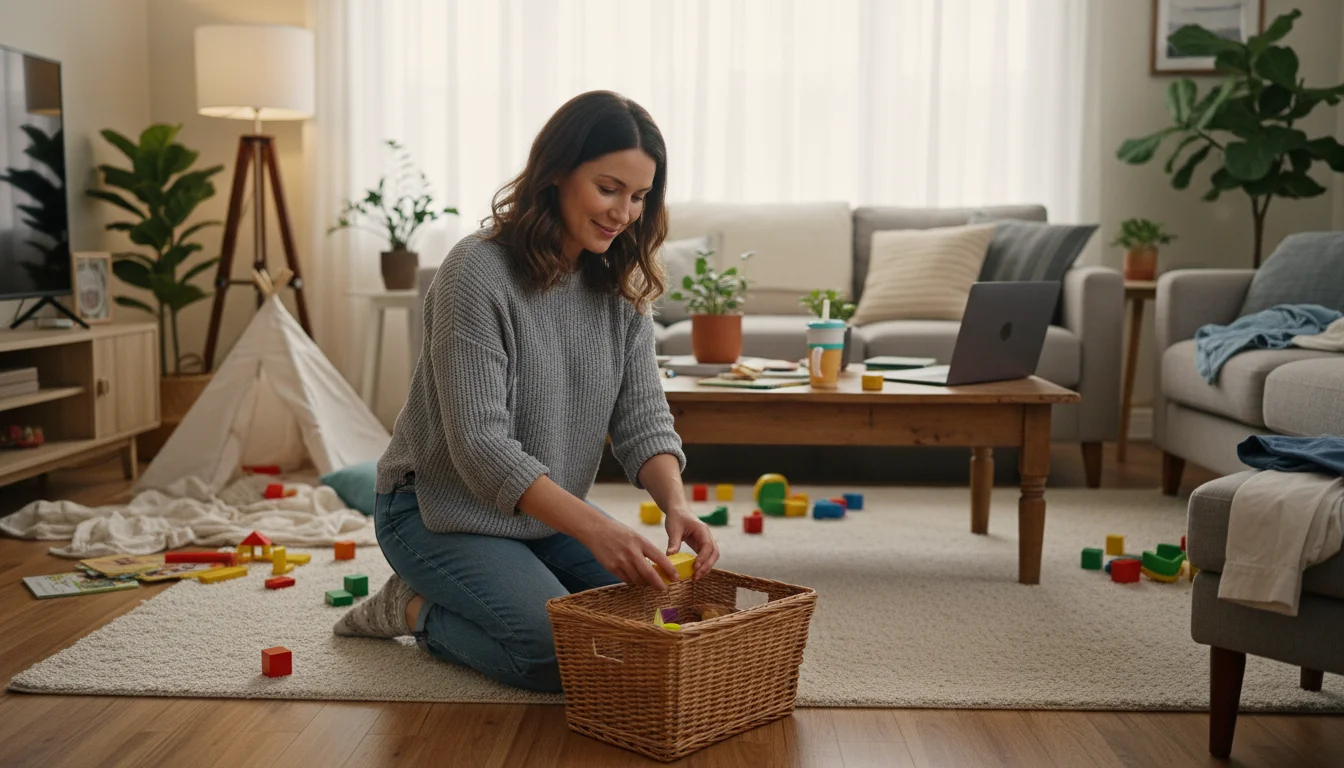
Why 15 Minutes? Embracing Progress Over Perfection
Fifteen minutes sounds almost too easy, doesn’t it? That’s precisely the point. The biggest barrier to home organization for working parents is often the perceived need for large, uninterrupted blocks of time. You don’t have those. What you do have are small pockets: before bed, right after dinner, or even first thing in the morning. A 15-minute daily reset leverages these fleeting moments.
This quick declutter system isn’t about deep cleaning or massive purges. It’s about maintaining a baseline of order. Think of it as tidying up the “surface clutter” that accumulates throughout the day. By consistently addressing small messes, you prevent them from snowballing into overwhelming mountains. This approach aligns with the “progress over perfection” mindset we champion here at BrightLivingGuide.com. You chip away at the clutter, bit by bit, and see tangible results without feeling exhausted.
Research supports the power of small, consistent habits. Studies on habit formation suggest that short, repeatable actions are more likely to stick than ambitious, time-consuming ones. By committing to just 15 minutes, you build a sustainable routine that actually works for your busy life. It reduces decision fatigue and keeps your home functional. We’re aiming for a living space that feels comfortable and helps you relax, not one that adds to your stress.
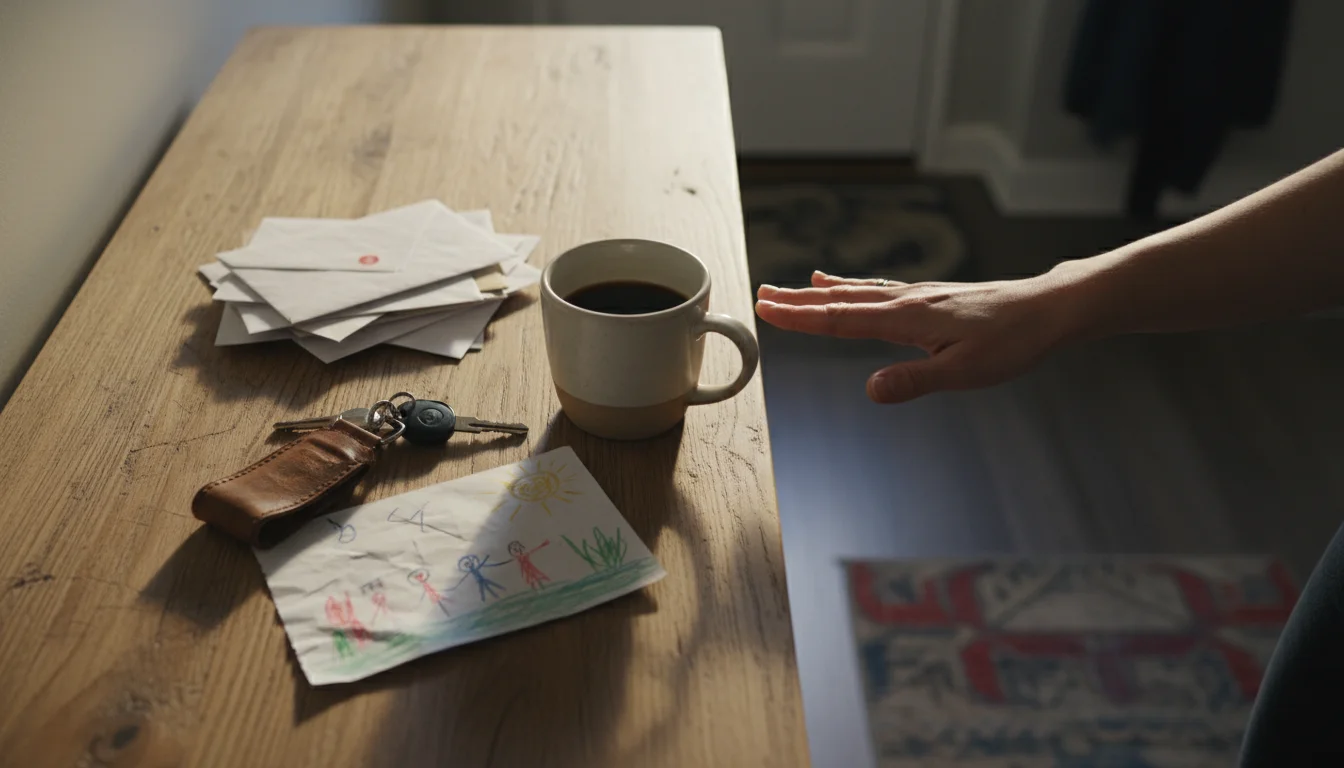
Understanding Your Home’s High-Traffic Zones
Before we dive into the “how,” let’s pinpoint the “where.” Every home has specific areas, or “zones,” that naturally attract clutter. For busy families, these are often the places where items are dropped upon entry, used frequently, or serve as temporary holding grounds. Identifying these hotspots helps you focus your 15-minute efforts for maximum impact.
Consider your entryway. It’s the first point of contact when you walk in the door. Backpacks, shoes, mail, keys, and coats often converge here. Without a system, this zone quickly becomes a chaotic dumping ground. Similarly, kitchen counters gather school papers, groceries, keys, and charging electronics. Living room surfaces become home to toys, remote controls, magazines, and half-finished projects. These are your prime targets.
Take a moment to observe your own home. Where does clutter naturally gather? Where do you find yourself constantly moving things around to make space? These are the areas that need your daily 15-minute attention. Understanding these critical zones allows us to create an effective quick declutter system tailored to your home’s unique flow and your family’s habits.
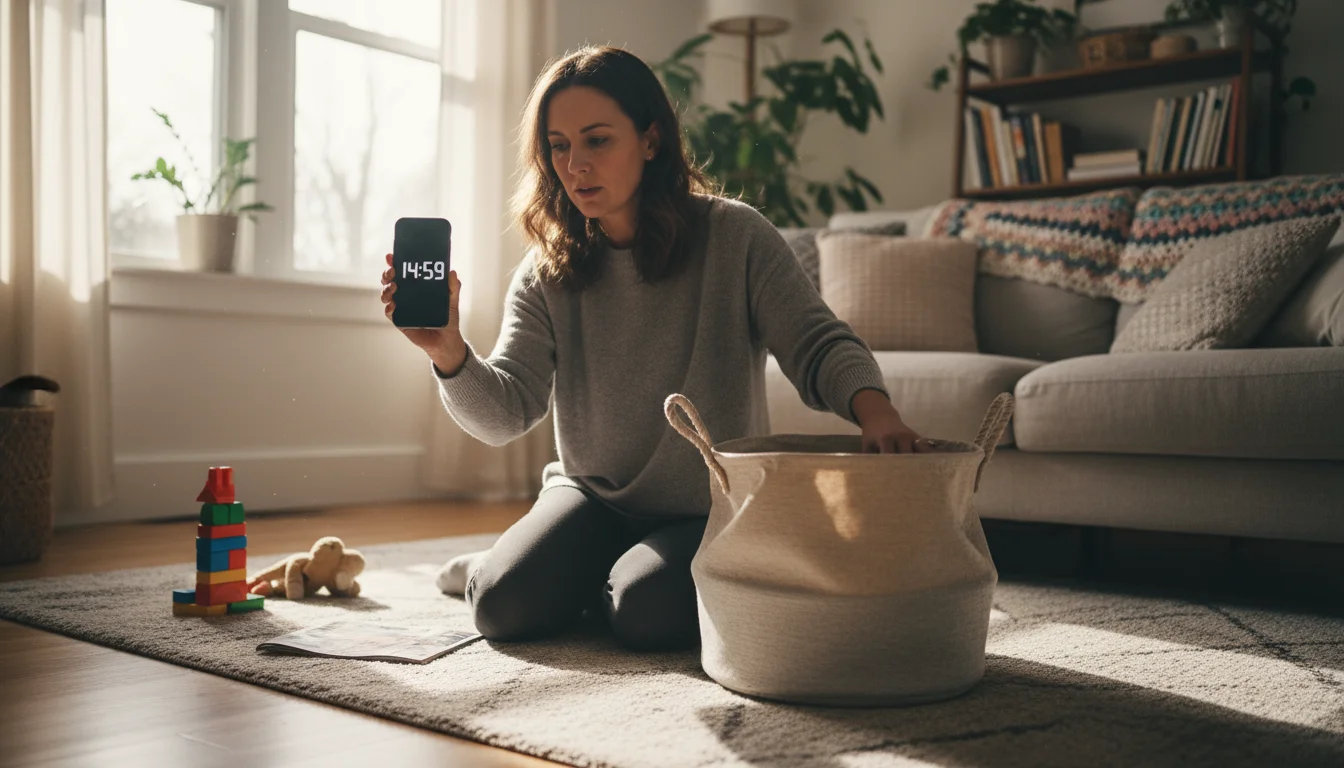
Your 15-Minute Daily Reset: A Step-by-Step Guide
Ready to implement your new daily cleaning routine? We break down the 15-minute daily reset into manageable steps. Remember, the goal is not to clean every corner, but to reset the most impactful areas.
Here’s how to execute your 15-minute decluttering burst:
- Set a Timer for 15 Minutes: This is crucial. The timer provides focus and prevents you from getting sidetracked. When it dings, you stop, no matter what. This builds consistency and prevents burnout.
- Grab a “Landing Zone” Container: Before you start, grab a laundry basket, a reusable shopping bag, or a large tote. This will be your temporary holding zone for items that don’t belong in the immediate area. We call this the “Relocation Hub.”
- Focus on One Room (or Zone) at a Time: Don’t try to tackle the entire house. Pick one high-traffic zone identified earlier, like the kitchen or living room, and stick to it. If one zone is particularly bad, focus solely on that area for the full 15 minutes.
-
The “Put Away” Power Round (10 minutes):
- Scan and Sort: Quickly scan your chosen area for anything out of place.
- “Home” or “Relocation Hub”: If an item has a designated home nearby, put it away immediately. If its home is in another room (e.g., a toy from the living room belonging in a child’s bedroom), place it in your Relocation Hub container. Don’t walk it to its home yet; that takes too much time.
- Dispose: Toss trash directly into the garbage and recycle obvious recyclables.
- Wipe Down Surfaces (Quickly): With any remaining time, give a quick wipe to a key surface, like the kitchen counter or dining table, using a damp cloth. This immediately enhances the feeling of cleanliness.
- The “Relocation Rally” (5 minutes): Once your timer hits 5 minutes remaining, grab your Relocation Hub. Quickly distribute the items inside to their correct rooms or designated homes. You aren’t organizing within those rooms, just getting the item to its proper destination. For example, the toy goes into the child’s bedroom, but you don’t need to put it into the toy bin right now. That’s a task for another day or another 15-minute session.
- Acknowledge Your Success: When the timer goes off, stop. Take a moment to appreciate what you accomplished. You’ve made progress, and that’s what counts. This positive reinforcement encourages you to keep going tomorrow.
This simple, repeatable process is the foundation of effective home organization for busy families. It creates visible improvements without demanding hours of your precious time.
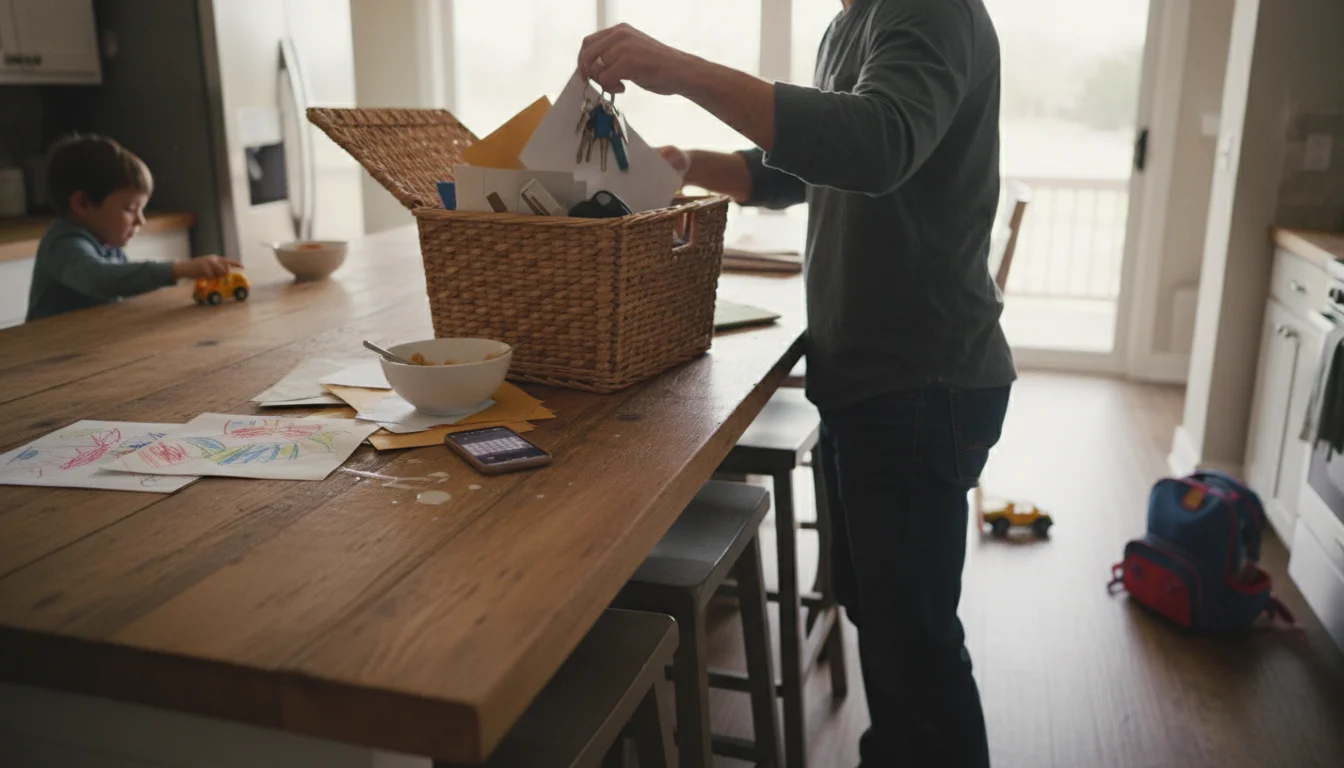
Tackling Common Hotspots: Entryways, Kitchen Counters, and Living Spaces
Let’s apply our 15-minute reset to the zones that often plague working parents. Remember, consistency in these areas yields the greatest returns.
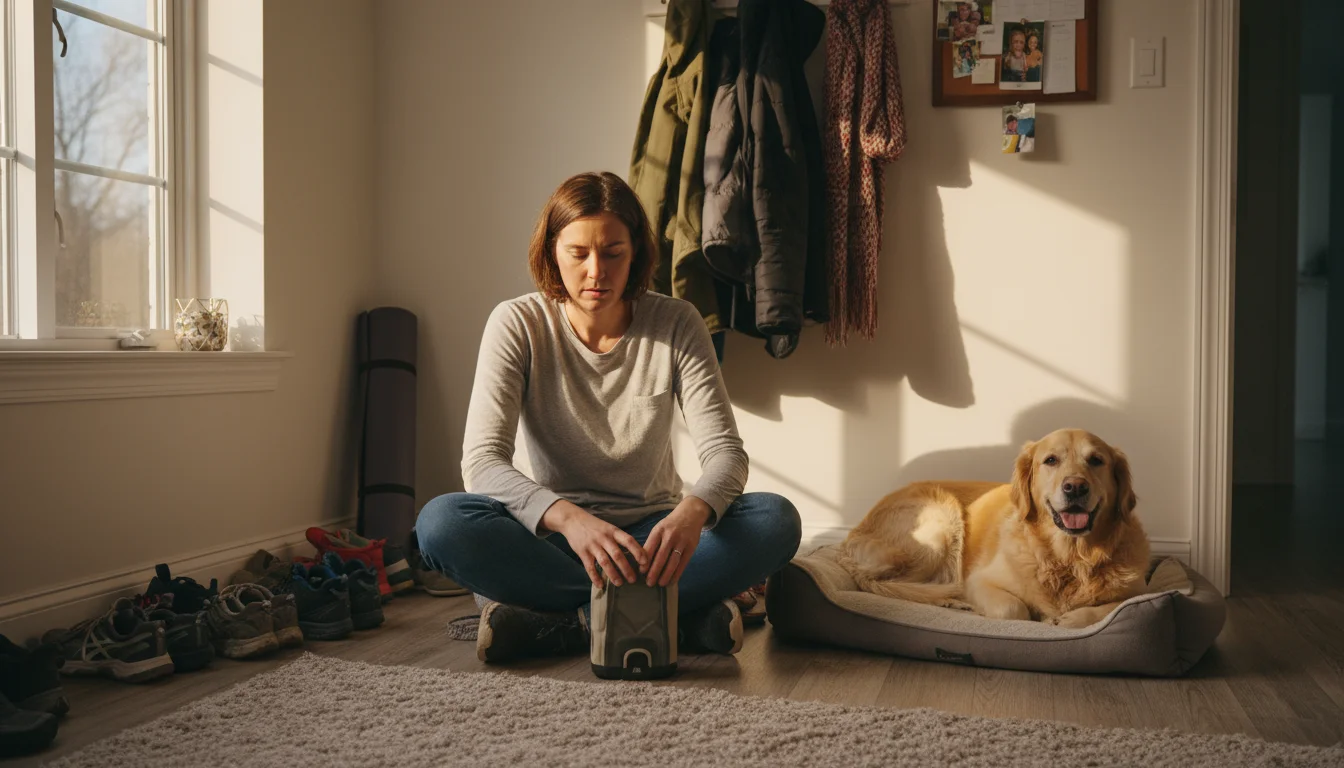
The Entryway: Your First Line of Defense
The entryway sets the tone for your entire home. A cluttered entry can make you feel stressed the moment you walk in. During your 15 minutes, focus on these actions:
- Shoes: Gather all shoes and place them on a shoe rack, in a basket, or directly into individual closets. If you don’t have a shoe storage solution, consider a simple, inexpensive bin.
- Coats and Bags: Hang coats on hooks or in the closet. Place backpacks and reusable shopping bags in their designated spots, or put them into your Relocation Hub if their home is elsewhere.
- Mail and Papers: Immediately sort mail. Recycle junk mail, place bills in an “action” tray, and put important documents in a designated inbox. This prevents paper piles from accumulating.
- Keys and Wallets: Ensure these essential items go onto a key hook or into a designated tray. Consistency here saves you frantic searches later.
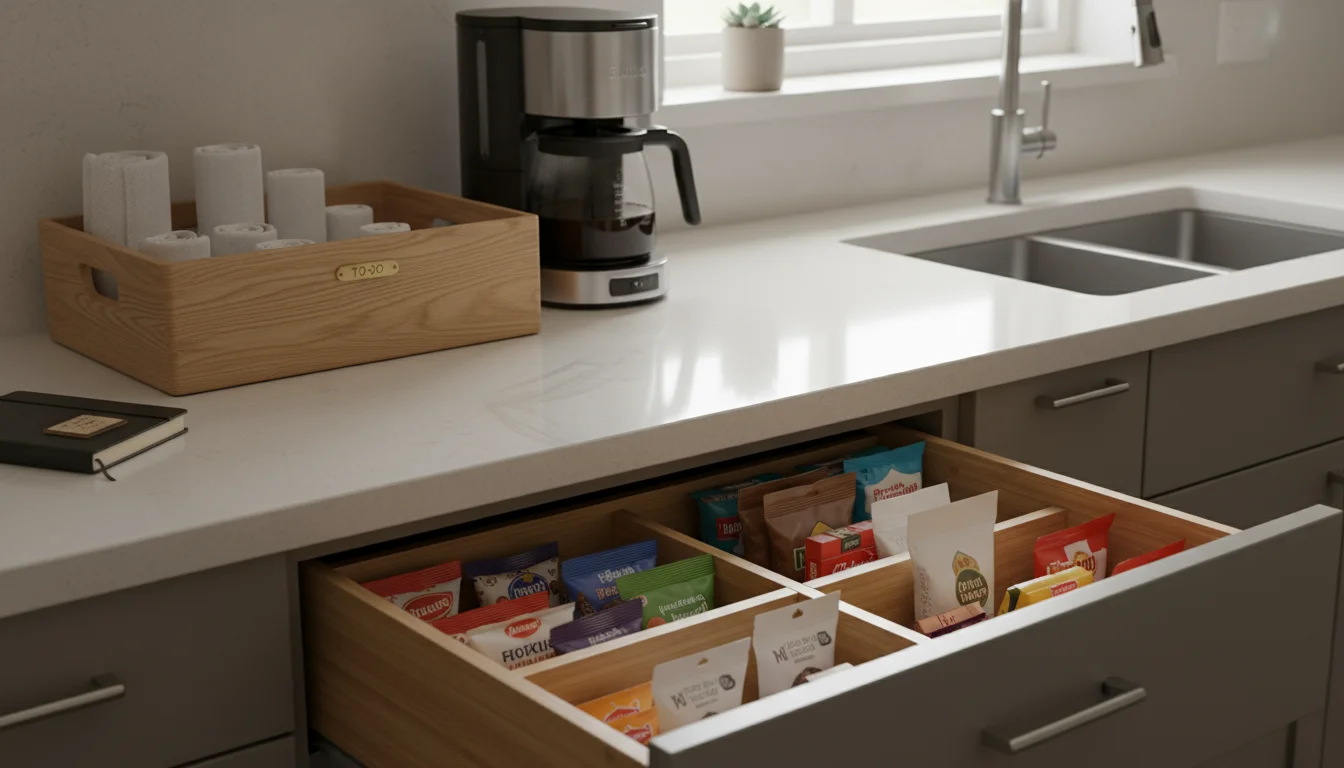
Kitchen Counters: The Command Center
Kitchen counters often become the catch-all for anything and everything. A clear counter makes food prep easier and your kitchen feel much calmer.
- Dishes: Load dirty dishes into the dishwasher. If it’s full and clean, empty it. Even just clearing the sink can make a huge difference.
- Food Items: Put away all open snacks, condiments, and groceries that have been left out. Designate a “snack drawer” or pantry shelf for easy access.
- Papers and Schoolwork: Gather any papers, permission slips, or art projects. Quickly sort them into your Relocation Hub or a designated “to-do” basket.
- Small Appliances: If you use them daily (coffee maker, toaster), leave them out. Put away any non-daily appliances that take up valuable counter space.
- Wipe Down: Give your counters a quick wipe. This removes crumbs and spills and makes the space instantly feel cleaner.
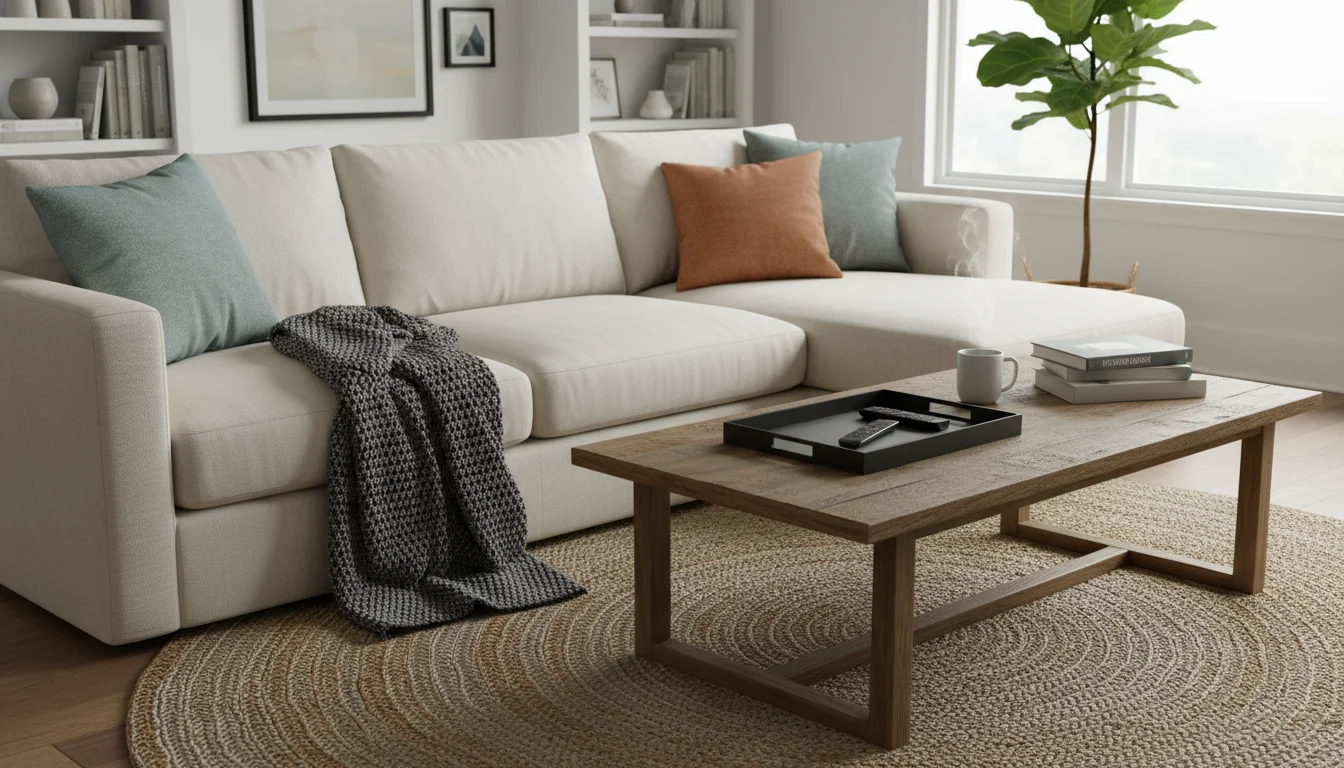
Living Spaces: Relaxation Zones
Your living room should be a place to unwind, not navigate an obstacle course of clutter.
- Toys: Gather toys and place them in designated bins or directly into your Relocation Hub for later sorting into kids’ rooms.
- Blankets and Pillows: Fold and arrange throws on the sofa. Fluff pillows to make the space inviting.
- Remote Controls: Place remotes in a designated caddy or tray.
- Magazines and Books: Stack neatly or place them on shelves.
- Random Items: Scan for water bottles, coffee mugs, or stray items and move them to their proper homes or the Relocation Hub.
By targeting these specific areas, your 15 minutes achieve maximum impact, consistently improving your home’s functionality and appearance.
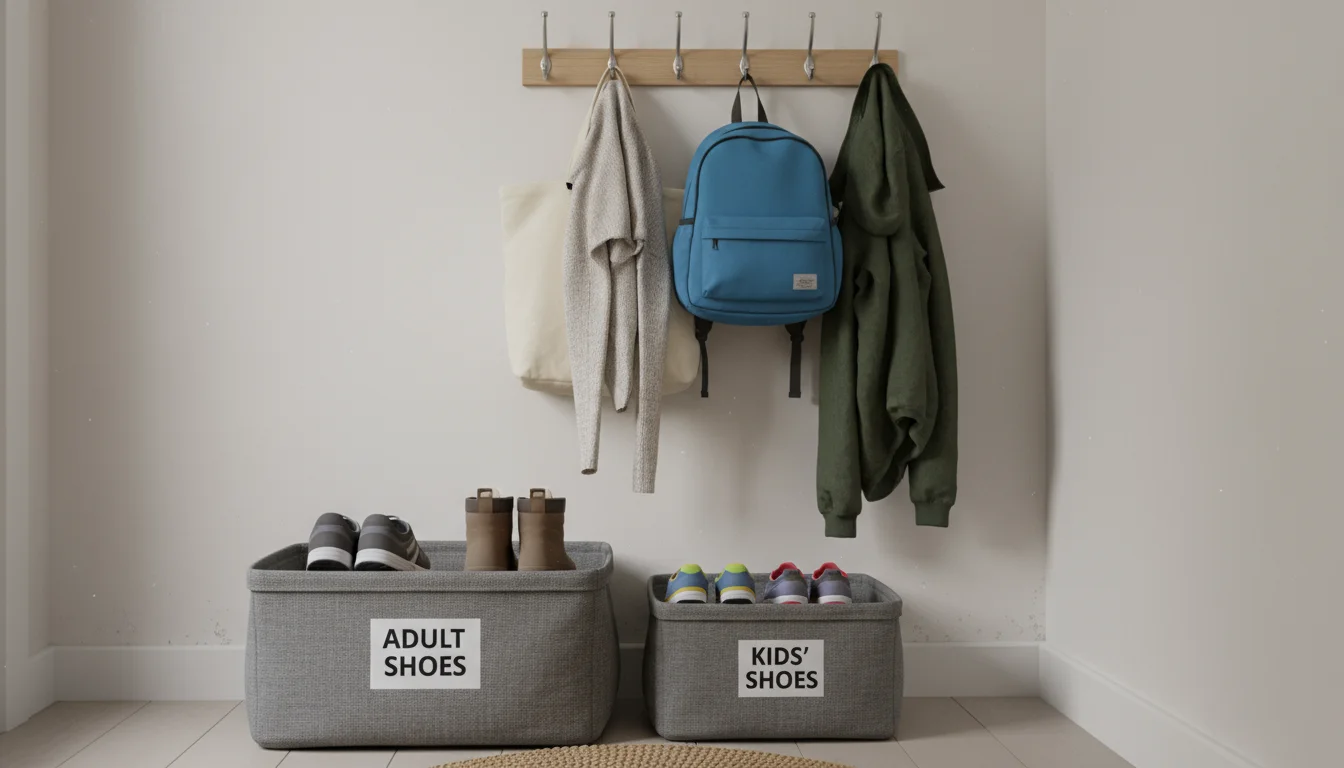
Smart Storage Solutions for Busy Families (Budget-Friendly Focus)
Effective home organization isn’t just about decluttering; it’s about having designated homes for everything. For working parents, these solutions need to be practical, easy to use, and ideally, budget-friendly. You don’t need to spend a fortune to create an organized home. The key is finding solutions that fit your space and your family’s habits.
Consider these budget-conscious options for your quick declutter system:
- Baskets and Bins: These are your best friends. Fabric bins, wicker baskets, or even simple plastic containers from a dollar store provide a designated spot for items. Use them in entryways for shoes, in living rooms for toys, or on shelves for craft supplies. They instantly contain clutter and make tidying much faster. You can find excellent options at stores like IKEA Home Organization or local discount retailers.
- Hooks: Wall-mounted hooks in entryways or behind doors are perfect for coats, bags, keys, and even dog leashes. They utilize vertical space, keeping items off floors and surfaces.
- Drawer Dividers: Often overlooked, drawer dividers bring order to kitchen utensil drawers, bathroom vanity drawers, and office supply drawers. You can even repurpose small boxes or plastic containers for this purpose. They prevent items from jumbling together, making things easier to find.
- Shelving Units: Simple, open shelving can provide much-needed storage in any room. Whether it’s a small bookshelf for books and decorative items, or wire shelving in a pantry for food, these units help keep items visible and accessible.
- Magazine Files: These inexpensive cardboard or plastic files are excellent for corralling school papers, mail, or even small craft projects. Label them clearly for easy identification.
- Command Hooks: For renters or those who prefer not to put holes in walls, Command Hooks offer a versatile, damage-free way to hang small items. Use them for dish towels, oven mitts, or even lightweight art.
The goal is to implement solutions that make it *easier* to put things away than to leave them out. By investing in a few smart, affordable storage items, you empower your daily 15-minute reset to be even more effective.

Getting the Whole Family Involved: Making Decluttering a Team Effort
You are not alone in this home organization journey. Getting your children and partner on board transforms decluttering from a solitary chore into a shared responsibility. This approach teaches valuable life skills to your children and lightens your load.

Involving Children: Age-Appropriate Tasks
Even young children can contribute. Frame it as a “family tidy-up” or a “mission to find things their homes.”
- Toddlers (2-3 years): Focus on simple “put away” tasks. “Put your blocks in the block bin,” “Put your shoes in the basket.” Make it a game.
- Preschoolers (4-5 years): They can help sort toys into designated bins. Teach them the concept of “homes” for their belongings. “Where does this toy live?”
- School-Age Children (6+ years): Assign specific zones. They can be responsible for tidying their bedroom, helping with the living room, or clearing their spot at the dinner table. Encourage them to empty their backpacks daily and put away school papers.
- Teenagers: They should be fully capable of managing their own space, helping with common areas, and contributing to the Relocation Rally. This is a critical time to instill habits of self-sufficiency.
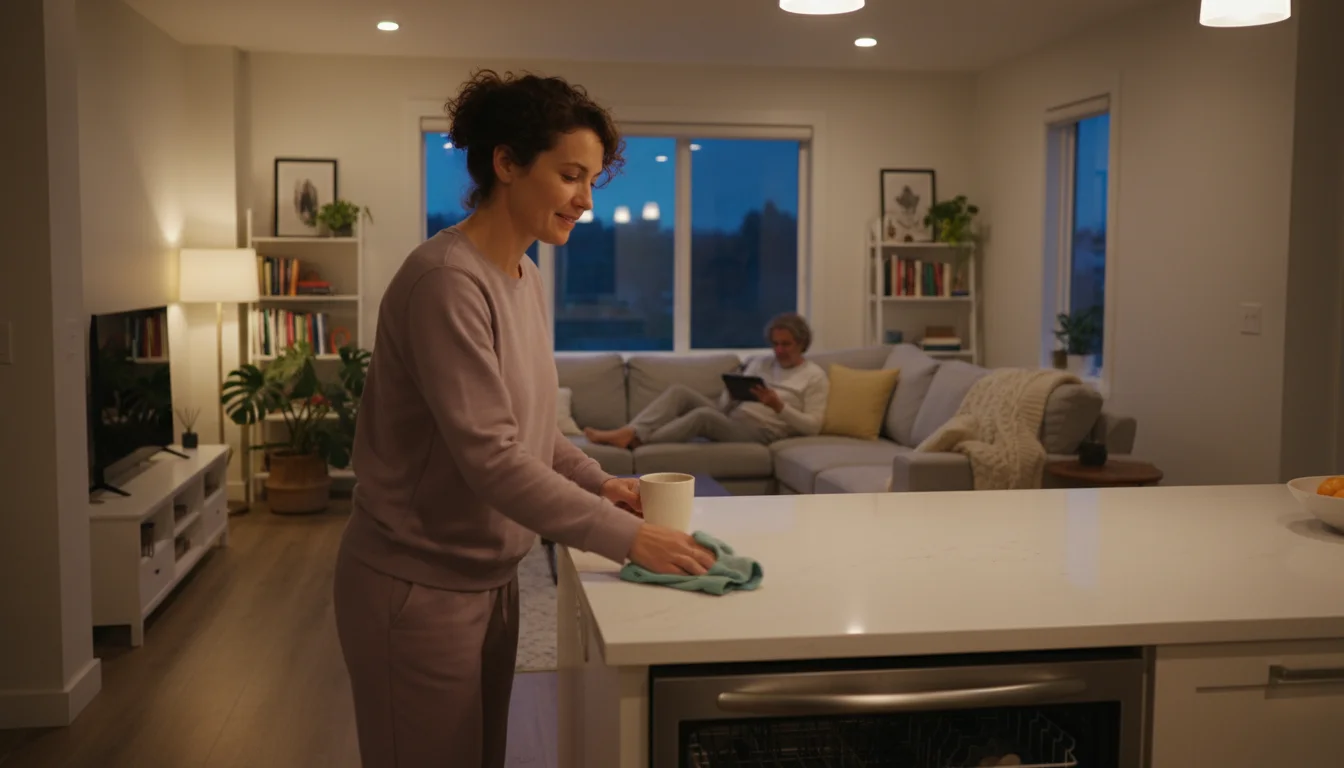
Partnering with Your Spouse or Partner
Open communication is key. Discuss the benefits of a less cluttered home for everyone’s stress levels and productivity.
- Divide and Conquer: Assign specific areas or types of clutter. One partner might tackle kitchen counters while the other focuses on the living room during the 15-minute reset.
- Lead by Example: When your family sees you consistently engaging in the daily reset, they are more likely to follow suit.
- Morning or Evening Routine: Decide as a couple when the 15-minute reset works best for both your schedules. Perhaps a quick ten minutes after dinner, and five minutes before bed.
When everyone contributes, even for a short time, the burden is shared, and the collective effort maintains a much calmer living environment. Remember, you’re building habits, not just cleaning.
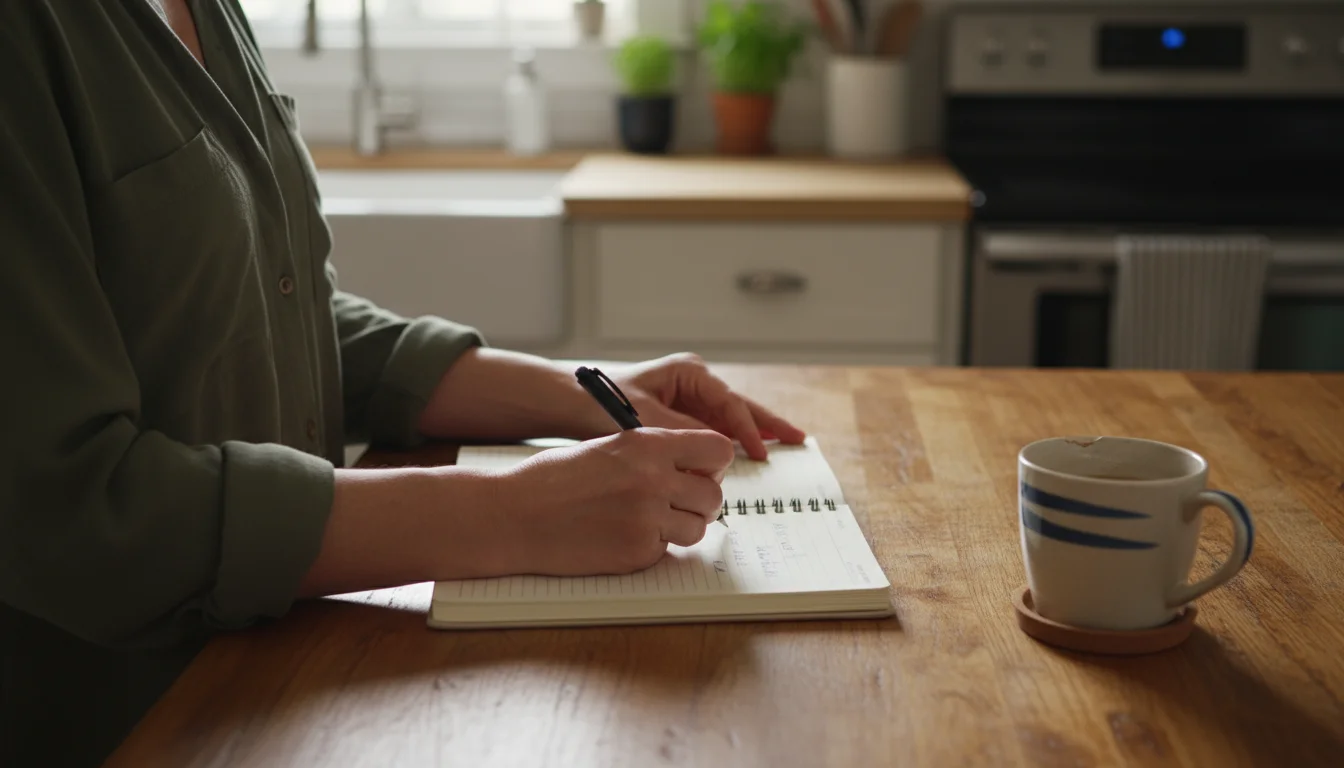
Maintaining Momentum: Troubleshooting and Adapting Your Routine
Implementing a new daily cleaning routine takes time and consistency. There will be days when the 15 minutes feels impossible, or when the clutter seems to multiply overnight. This is common, and we have solutions to help you stay on track with your decluttering tips.

Common Challenges and Practical Solutions:
- “I missed a day (or three)!”: Don’t despair. Life happens. Forgive yourself and just start again tomorrow. The power of this system lies in its flexibility and low barrier to entry. Don’t let one missed day derail your entire home organization effort.
- “The kids aren’t helping”: Revisit the discussion about shared responsibility. Consider a visual chore chart for younger children. For older kids, tie their contribution to privileges, or simply model the behavior consistently.
- “15 minutes isn’t enough”: On really chaotic days, 15 minutes might only scratch the surface. That’s okay. The point is to prevent the mess from getting worse. If you consistently find 15 minutes inadequate in a particular zone, that might signal a need for a deeper decluttering session in that specific area on a weekend, or a need for better storage solutions. For more comprehensive organizing tips, The Spruce offers a wealth of resources.
- “I get distracted”: Turn off your phone’s notifications. Put on some energizing music. Stick strictly to the timer. Remember, this is a sprint, not a marathon.
- “I don’t know where to start”: If a room feels overwhelming, break it down further. Focus on just one surface: the coffee table, the dining table, or the kitchen island. Start small and build confidence.
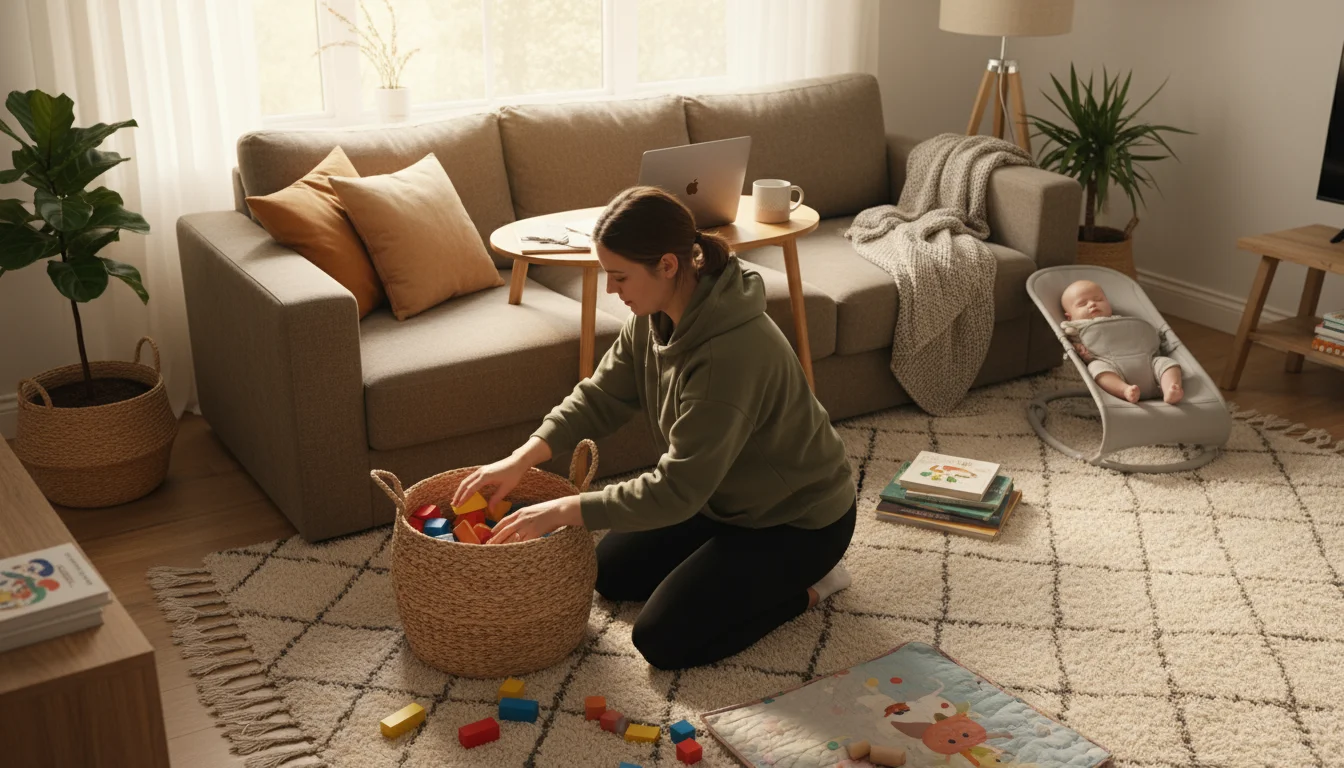
Adapting Your Routine for Different Life Stages or Seasons:
Your home’s needs change. Be prepared to adjust your 15-minute daily reset.
- School Breaks: You might need to adjust the focus. More toys might be out, so the living room or play area might need more attention.
- New Baby: Your “free” time will be even more limited. Simplify your reset. Maybe it’s just 5-10 minutes focusing solely on baby-related clutter and maintaining critical surfaces.
- Working from Home: If your home office is also a high-traffic area, incorporate a quick desk tidy-up into your 15 minutes to maintain focus and professionalism.
The 15-minute daily reset is a living system. It adapts to you, not the other way around. Be kind to yourself, celebrate your progress, and trust that consistent small actions lead to significant improvements in your home’s functionality and your family’s comfort. This is realistic decluttering for your real life.
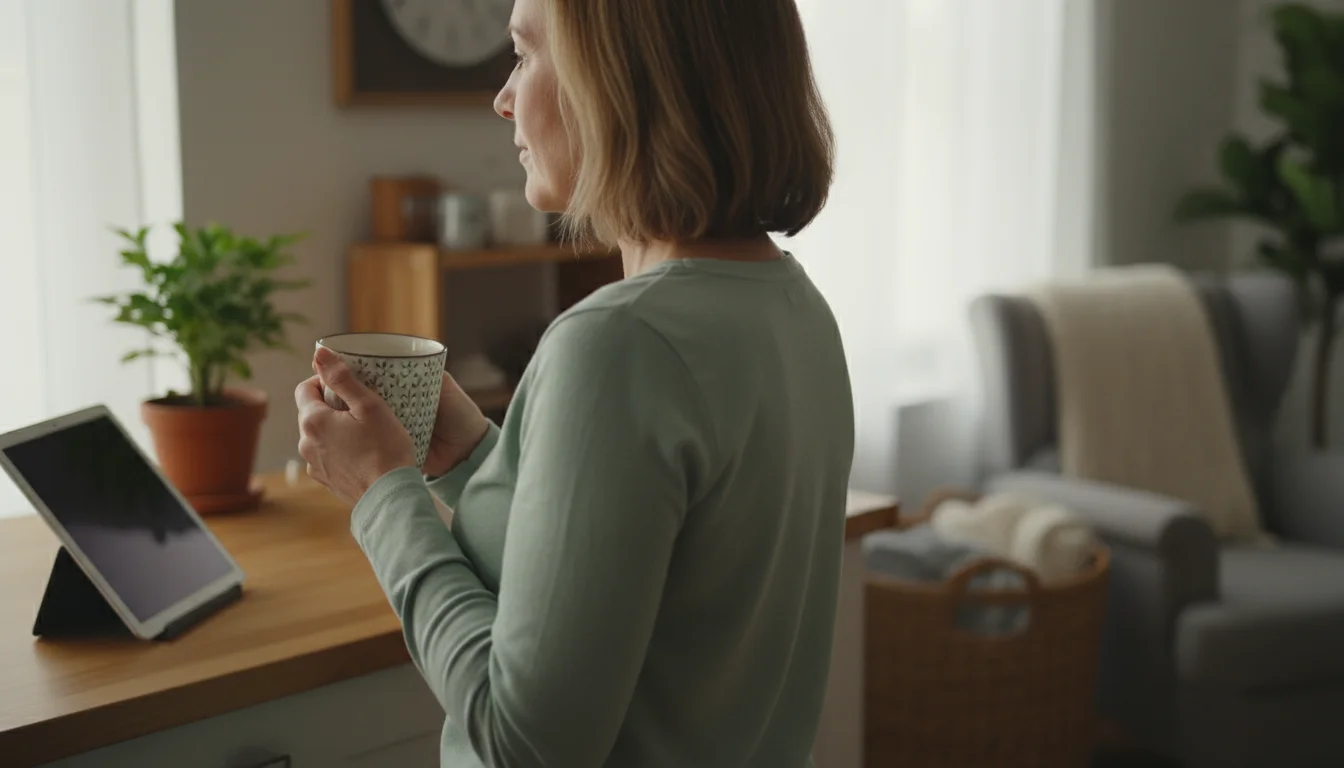
Frequently Asked Questions
What if I have guests coming over and 15 minutes won’t cut it?
The 15-minute daily reset is for maintenance, not deep cleaning or emergency guest prep. For guests, you might need a “power hour” session. Even then, the daily reset ensures you’re starting from a better baseline, so the “power hour” is less daunting. Focus on visible surfaces and high-traffic areas first.
Should I do the 15-minute reset in the morning or evening?
The best time is when it works for you. Some prefer doing it in the evening to wake up to a tidier home. Others find a morning burst energizing. Experiment to see what fits your busy family organization schedule. The key is consistency, regardless of the time of day.
What do I do with sentimental items I don’t want to get rid of?
The daily reset focuses on “surface clutter” and items that belong elsewhere. It’s not the time for deep decluttering of sentimental items. For those, dedicate a separate, longer session. Store them thoughtfully in designated memory boxes or display them intentionally. This quick declutter system keeps your home functional without forcing emotional decisions daily.
How long does it take to see results from this daily cleaning routine?
You will likely notice results within days, especially in your high-traffic zones. The cumulative effect builds over weeks. Consistency is the most important factor. Stick with it, and you’ll experience a sustained improvement in your home’s order and your personal peace of mind.


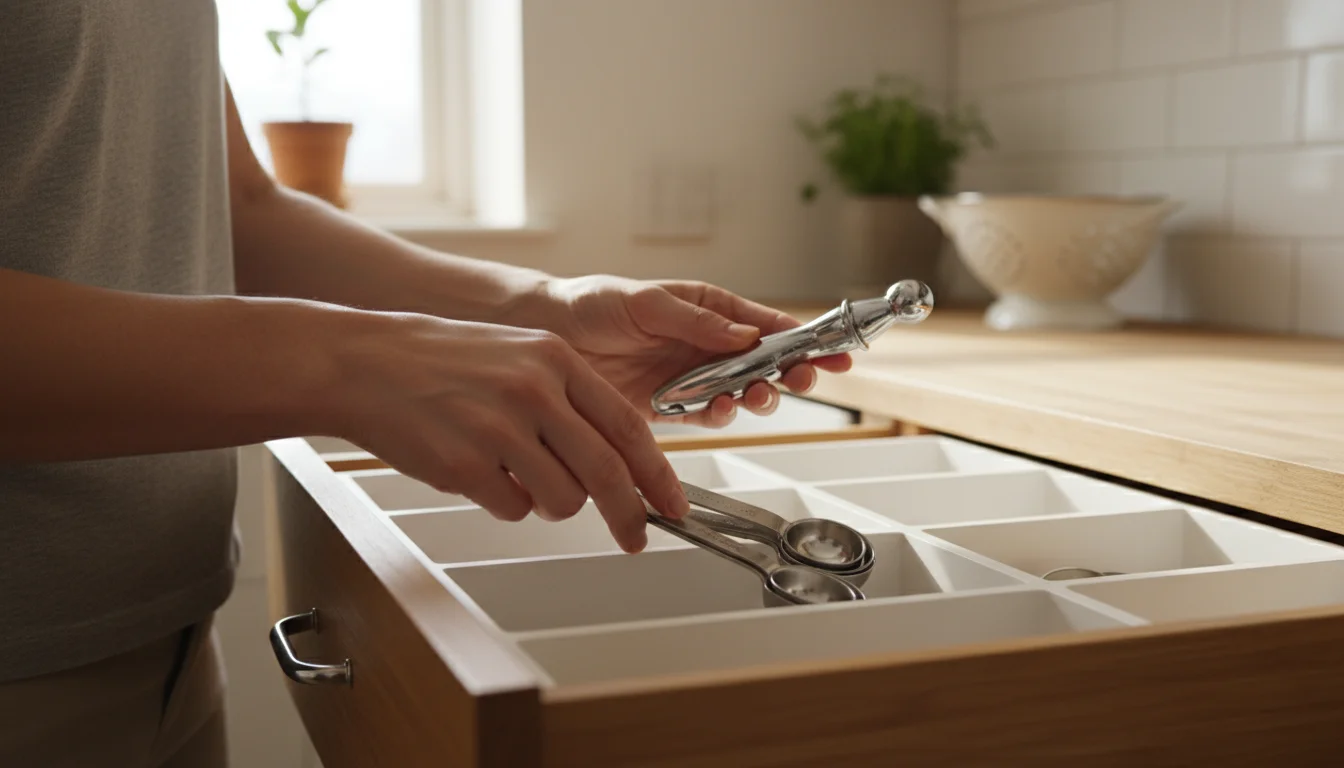

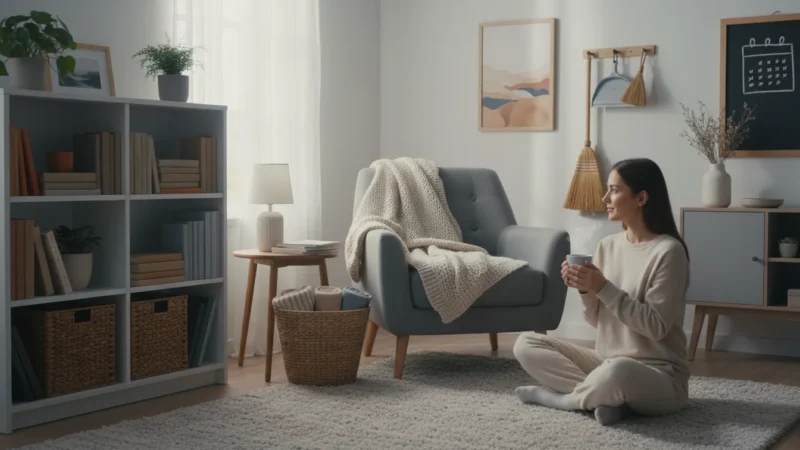
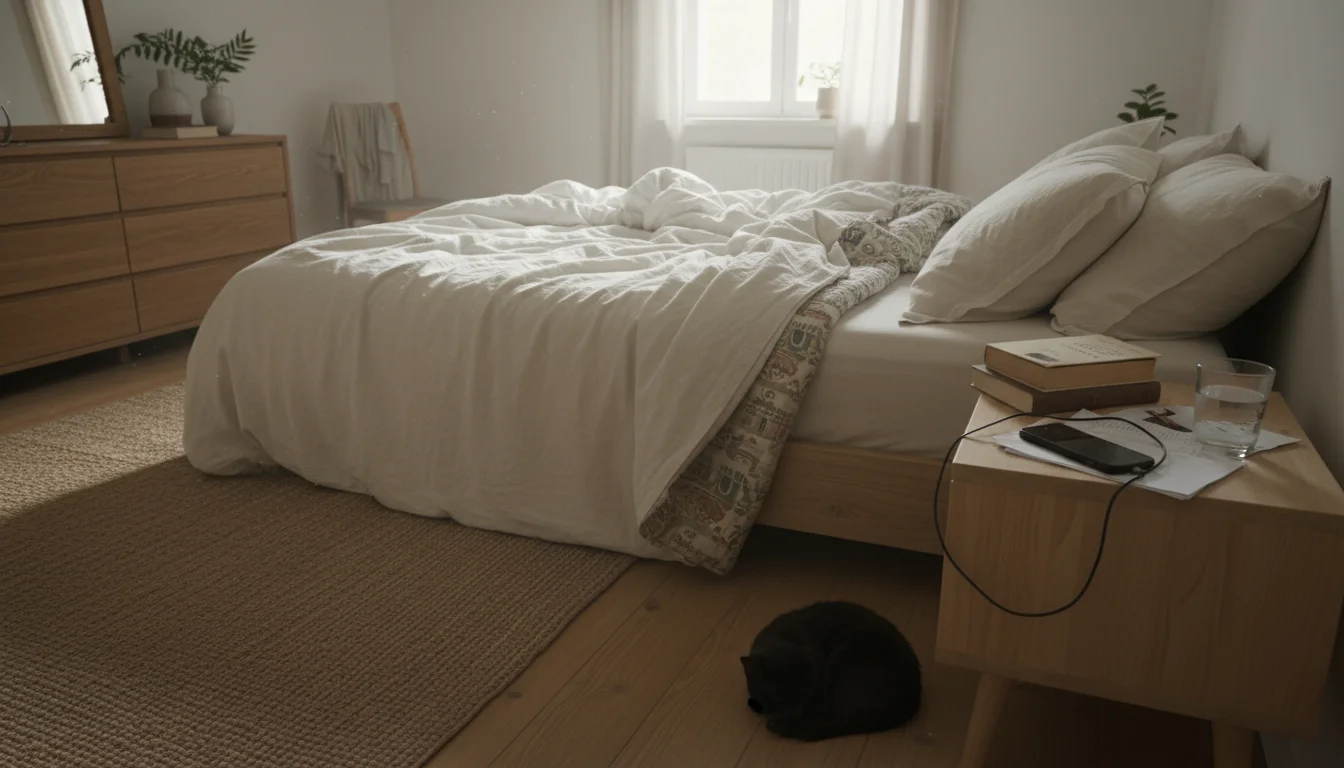

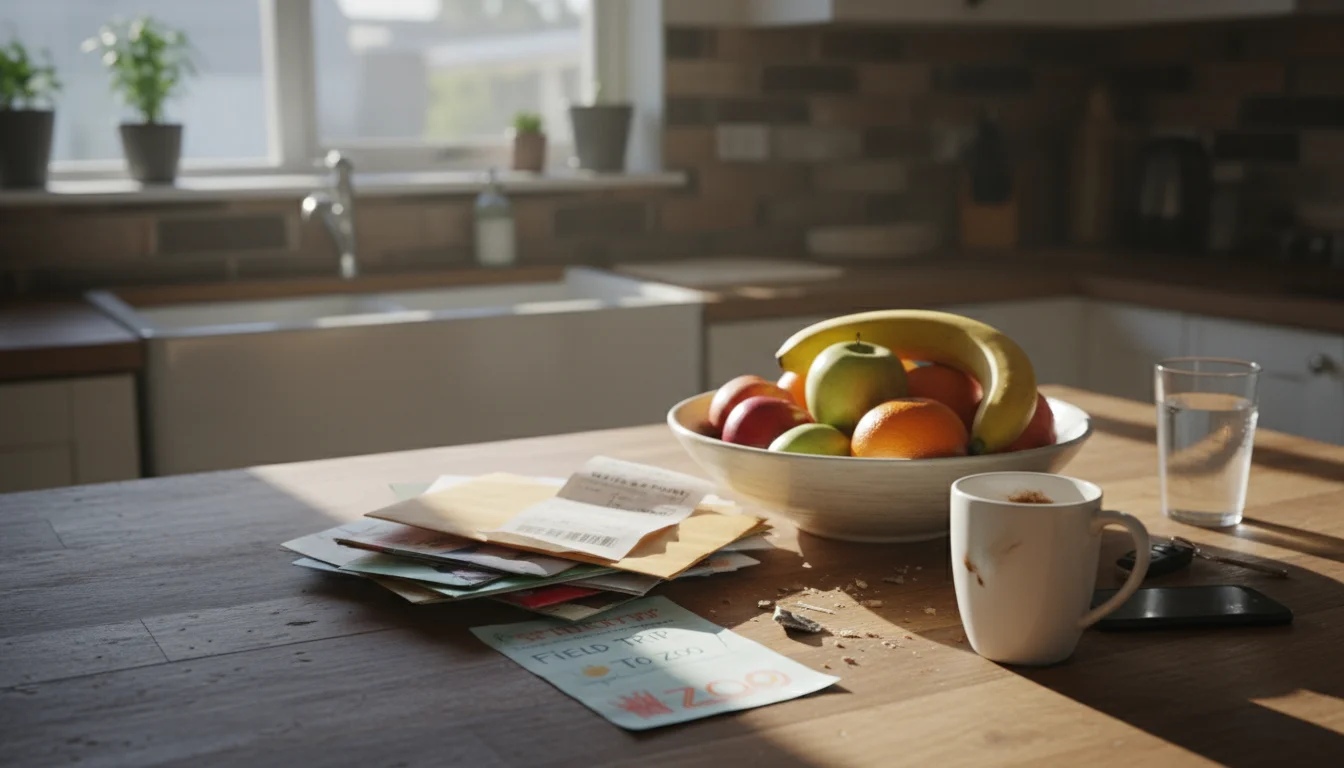

Leave a Reply